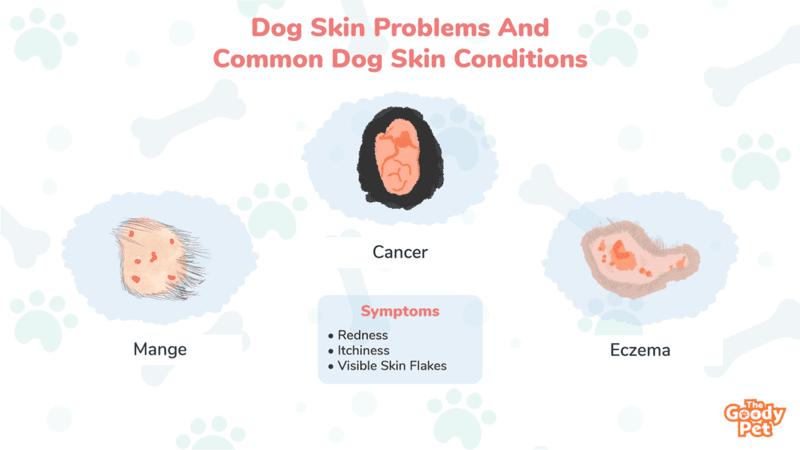Dogs are prone to a number of skin problems, some of which are easy to treat, while others can be more difficult.
Most common dog skin problems include allergies, hot spots, and yeast infections.
Allergies are the most common skin problem in dogs, and they can be caused by food, pollen, and flea bites. Hot spots are another common skin issue in dogs and are usually caused by an infection or an allergy. Yeast infections are also relatively common in dogs and are usually caused by an overgrowth of yeast on the skin.
In this post, we’ll take a look at the most common dog skin problems and their treatments. We’ll also provide some tips on how to prevent these issues from occurring in the first place. So if your pup is experiencing any skin issues, read on for help!
What Skin Conditions Can Dogs Get?
Understanding what the conditions are is the first step in actually stamping them out and giving your pooch a chance at a happy and healthy life. So, without further ado, here is more on the six most common skin conditions that dogs suffer from.
#1: Eczema
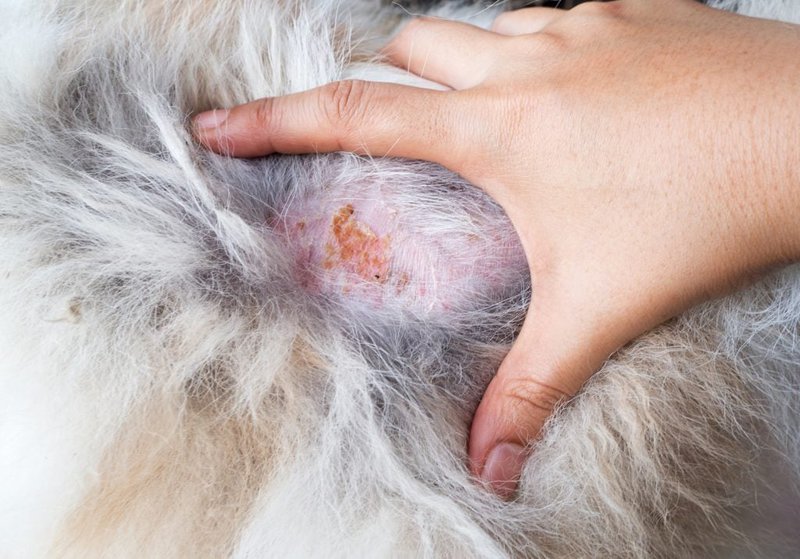
This is a chronic, irritating, and inflammatory condition that triggers excessive licking and scratching. It is triggered by exposure to a variety of things, from cleaning chemicals to food and parasites.
#2: Allergic Dermatitis
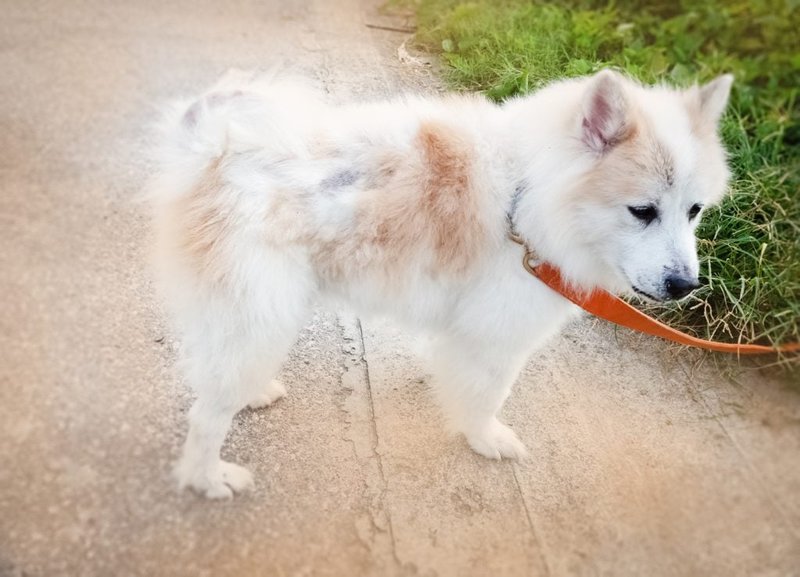
This is very similar to eczema in terms of the triggers and symptoms. However, the reactions are more acute and will more often than not subside with the withdrawal of the allergen.
#3: Mange
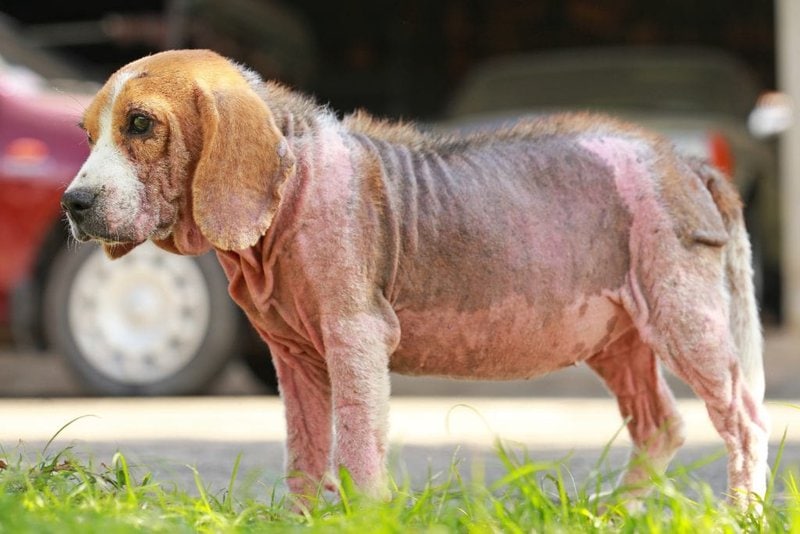
This is a skin condition caused by parasitic mites that burrow under the dog’s skin and lay their eggs there. This entire process provokes aggressive reactions both by the dog’s immune system and through reflexes like itching which worsens the state of the skin.
#4: Dandruff
Dandruff is a result of skin dryness that leads to flaking off of the skin at a high rate. This could be due to poor grooming practices, low water intake, or even as a complication of other skin conditions.
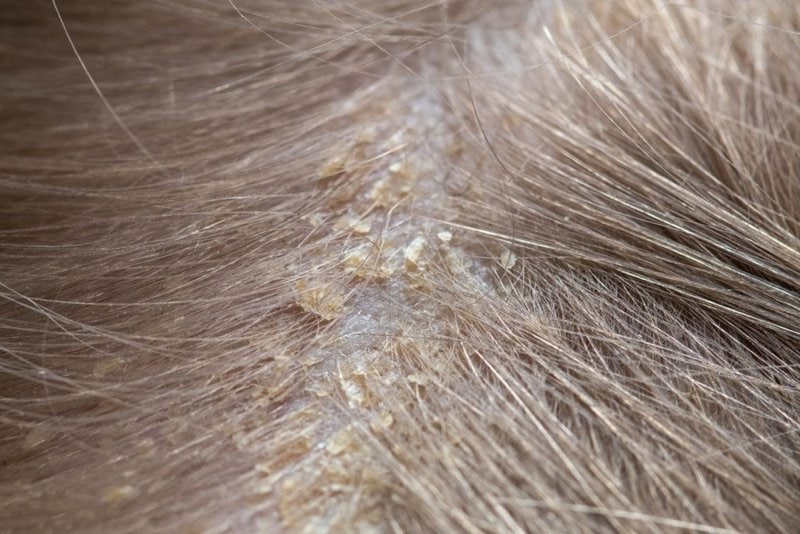
#5: Skin Infections
The most common here are bacterial conditions like impetigo, folliculitis, and even bacterial acne. It could also be fungal which causes yeast infections are the main issues. Finally, dogs also suffer from parasitic infections like ringworm.
#6: Skin Cancers
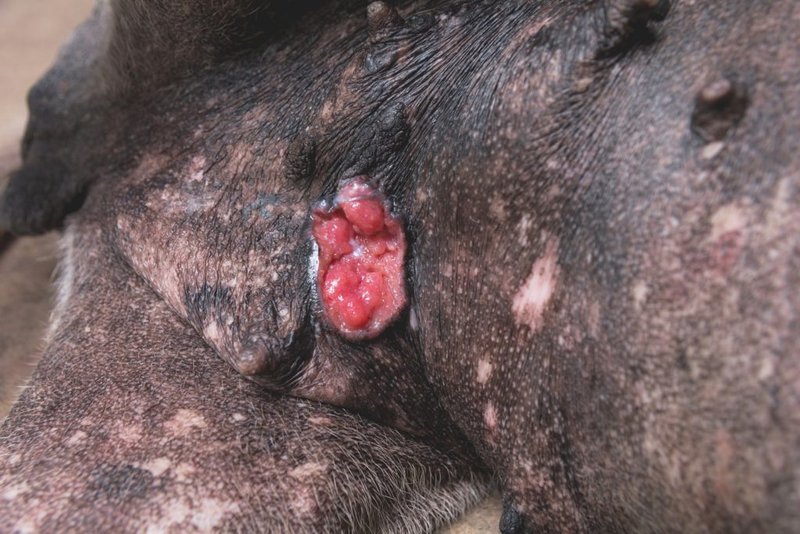
These contribute to mortality in a lot of dogs and include tumors like melanomas and mast cell tumors. However, with early diagnosis and treatment, a lot of these are relatively easy to manage.
What Causes Dog Skin Problems?
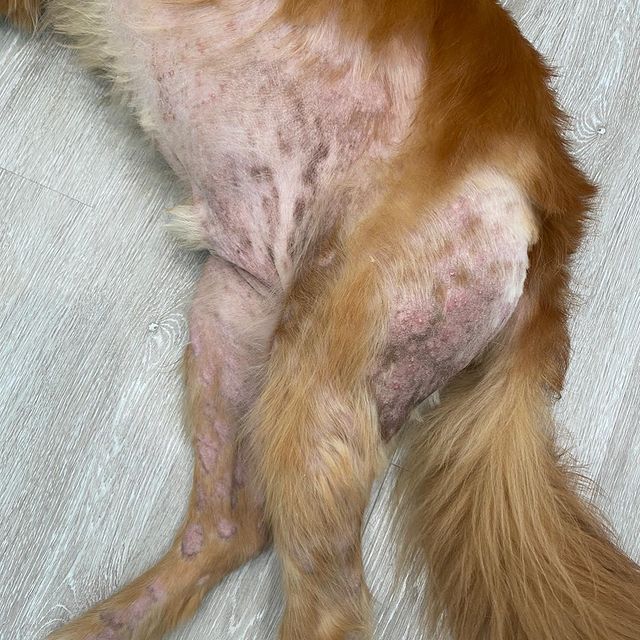
Now that you know what the conditions are, here are some of the most commonly implicated causes of the conditions and their complications. Understanding the source is a fantastic way to come up with an effective prevention strategy for the sake of your pooch. Here are the main causes of skin dog problems.
Microorganisms
This includes bacteria, fungi, viruses, and protozoa. More often than not, these do not directly cause skin problems but instead, take advantage of damaged skin whether from injuries, scratching, or the presence of pests. One of the most prolific in this case is Staphylococcus bacteria which causes most bacterial dog skin infections.
Environmental Triggers
These trigger both acute allergic reactions and long-term complications like eczema. Common triggers here include pollen, chemicals in grooming products, and even fabrics. It could also be as a result of food either through the gut-skin axis or through contact as the pooch is feeding in which case the paws and facial skin are affected a lot more.
Excessive Sun Exposure
Sun exposure has been implicated as a risk factor for skin cancers. Research shows that although a little sunbathing for a dog is completely harmless, prolonged exposure especially on dogs with light coat covers could increase the overall risk of developing tumors like melanoma.
Poor Grooming Practices
Not washing your dog regularly enough or doing it too much could also be a reason why they are suffering from skin issues. In both cases, the natural balance of oils on the skin is threatened to leave them at risk of skin dryness and resulting dandruff. In addition to this, not washing enough allows pests and microorganisms to thrive causing more problems.
Pests
These include mites, ticks, and fleas. They cause a variety of skin issues as highlighted in previous sections including intense itching which is the cause of most scabs on dogs as well as subsequent skin infections.
Symptoms Of Dog Skin Problems

The only good thing about skin conditions is that they are often very easy to spot. Here are some of the telltale signs that your dog has a skin problem that needs urgent attention.
Itchiness
This is one of the vaguest signs of skin issues as it occurs in pretty much all of them as well as in perfectly healthy dogs. However, if you notice an increase in itchiness in terms of frequency and intensity then something is wrong.
Hives And Rashes
Hives and rashes occur everywhere from thighs to the belly area and are common in cases of allergic dermatitis and pest infestations.
Skin Flakes On The Coat
Dry and flaky skin on dogs typically manifests as dandruff on the fur. On closer inspection, you may notice dryness and even cracks on the actual skin under all the fur cover.
Open Skin Sores
Open skin sores may be a result of excessive scratching with long claws. However, it could also be a result of skin conditions in which case issues like skin infection, pest infestation, and some tumors are the most common causes.
Scabs
Sometimes, you will not notice the sores until they appear as scabs. This is often a sign of a healing skin condition but should still be monitored as itching usually intensifies in this stage.
New Growths
New growths appear as small skin tags and may or may not grow with time. If you notice something unusual, keep an eye on it and be sure to report it to your vet on the next visit in case it is a tumor.
Redness
Dermatitis in dogs more often than not looks like red skin that may or may not be inflamed. It is also a sign of irritation from other skin issues including infections and pests.
Fur Loss
Fur loss in dogs may happen in localized clumps or all over. It is a complication of almost all skin conditions when the skin health deteriorates to the point of not being able to support a healthy coat.
Bumps
Bumps are commonly associated with mites. This is because they tend to burrow under the skin leaving their eggs there and causing localized inflammatory reactions.
How Do You Treat A Dog With Skin Problems?
There are several ways to treat dogs with skin problems from home remedies to ready-made preparations that target specific dermatologic conditions. It goes without saying that it is best to consult a vet before using these methods. However, it doesn’t hurt to know what options you have in which case here are 3 things you could do for a dog with skin problems.
Use Medicated Shampoos
Medicated shampoos are specially formulated to protect your dog from skin infections. They come in particularly handy in case your pooch has other skin conditions that could leave them vulnerable. We recommend you try the Veterinary Formula Clinical Care Medicated Dog Shampoo. It stands out with its antiparasitic and antiseborrheic formulation which protects not only from bacterial infections but also from parasites like ringworm and pests like mites.
Apply Soothing Oils
Coconut is fantastic for dog skin, especially when dealing with irritation. It is particularly useful when it comes to issues like skin dryness and is one of the best solutions to itchiness. You can therefore put coconut oil on scabs to keep the dog from scratching them off. In this case, try Zesty Paws Coconut Oil for Dogs which is ideal as it can both be applied topically or consumed for further health benefits.
Actual Medication
Finally, contact your vet for antibiotics which are the best way to deal with bacterial skin infections in dogs. They could also recommend other useful medications including corticosteroid creams and antihistamines to deal with inflammation and other allergic reactions.
Is My Dog’s Bacterial Skin Infection Contagious?
The answer here is a technical and tentative yes. Dog bacterial skins can be spread from one dog to another and even to you as the handler. However, these instances are incredibly rare and this is why some experts do not believe that it is a credible concern.
The main reason for this is the fact that most skin infections that affect dogs require some form of skin break. Most of these infections are caused by bacteria that exist naturally and non-problematically in other dogs and cats with no skin issues. They take advantage of damaged skin to cause infections.
Some vulnerabilities could be dry skin that has cracked, hot spots from irritation or open wounds from scratching or pest activity on the dog’s skin. If your dog already has some of these skin problems and it comes into contact with the infected pooch, then there is always the risk of the infection spreading.
However, if your dog has no open wounds or damaged skin, then cross-contamination is incredibly low and so you do not have a lot to worry about.
However, issues like pest infestation that contribute to bacterial infection can be contagious in which case pest infestations are the main culprits. As a result, it may be necessary to practice some form of isolation and minimize handling as you get the issues under control. This is particularly important if you have other pets in the home that could be exposed to all these issues.
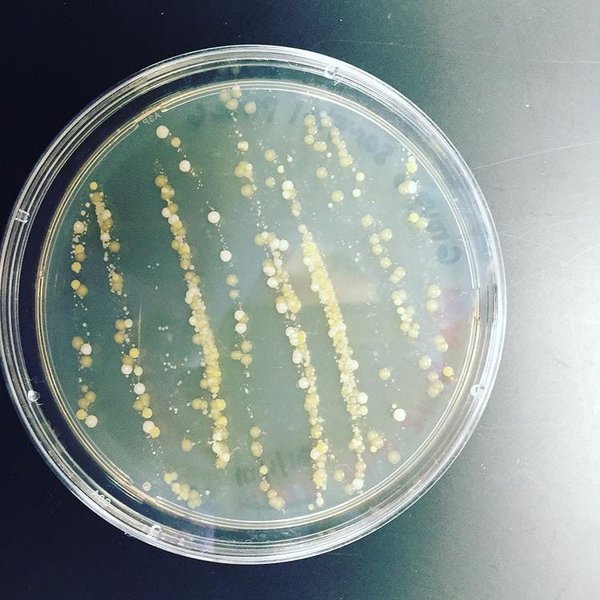
Related Questions
Can I Use Hydrocortisone Cream On My Dog? Yes, you can actually use hydrocortisone cream on your dog. It is a corticosteroid with anti-inflammatory effects that is fantastic for dealing with different forms of skin irritations. For this, we recommend the Aveeno 1% Hydrocortisone Anti-Itch Cream. It has the vet-approved concentrations of hydrocortisone ensuring fast and lasting relief to irritated skin.
Why Is My Dog Itchy But No Fleas? Itchiness is the commonest sign of skin conditions in dogs. Unfortunately, it is also the vaguest and occurs in pretty much all dermatological cases whether it is allergic dermatitis or even cancer. So if your dog is itchy but has no fleas then it could be a number of other skin issues which need to be further investigated for appropriate treatment. Learn more in this article.
Will Benadryl Help A Dog With Itching? Benadryl is an antihistamine that is commonly used to deal with dog allergies. It can actually help reduce itchiness with issues like contact dermatitis and other allergic skin reactions. However, it is not as effective when used as a tablet as other topical relief products like hydrocortisone creams on the market.

